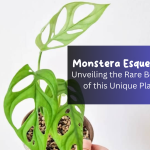Sunburn Pothos (Epipremnum aureum), also known as Devil’s Ivy, is a popular houseplant cherished for its beautiful trailing vines and low maintenance requirements. However, just like humans, plants can also suffer from sunburn. This comprehensive guide will explore the causes, prevention, and treatment of sunburn in Pothos plants, ensuring you can keep your green companion healthy and thriving.
Understanding Sunburn in Pothos
What is Sunburn in Pothos Plants?
Sunburn in Pothos refers to the damage caused to the plant’s foliage due to excessive exposure to sunlight. Prolonged and intense sunlight can lead to the breakdown of chlorophyll and other pigments in the leaves, resulting in discoloration, wilting, and, eventually, leaf death.
Causes of Sunburn in Pothos
Several factors contribute to sunburn in Pothos plants:
- Direct sunlight: Pothos plants are native to tropical rainforests and are adapted to thrive in the shade. When exposed to direct sunlight, the leaves can quickly become overwhelmed and sustain sunburn damage.
- Intense light: Even if not exposed to direct sunlight, Pothos can still suffer from sunburn if exposed to low light for prolonged periods; this can occur near windows with high levels of sunlight or under intense artificial lighting.
- Seasonal changes: Pothos plants may acclimate to lower light levels during winter. They can be more susceptible to sunburn when moved to a brighter location during spring or summer.
Identifying the Signs of Sunburn in Pothos
Recognizing the signs of sunburn in Pothos plants is crucial for timely intervention. Look out for the following symptoms:
- Yellowing or bleaching of leaves: The leaves may turn pale or yellowish, losing their vibrant green color.
- Brown spots or patches: Sunburned areas often develop brown spots or patches, indicating damage to the leaf tissue.
- Wilting or drooping: Sunburned leaves may start to wilt or droop, signaling stress and dehydration.
Why are Pothos Plants Prone to Sunburn?
Pothos plants have a naturally high tolerance for low light conditions. Their leaves are designed to capture and utilize light energy in shady environments efficiently. However, this also makes them more susceptible to damage when exposed to intense or direct sunlight.

Prevention Techniques
Choosing the Right Location
Selecting an appropriate location is essential to prevent sunburn in Pothos plants. Opt for areas with bright, indirect light, away from direct sunlight. East-facing or north-facing windows are often ideal, as they provide gentle morning or filtered light.
Gradual Acclimatization to Sunlight
If you wish to move your Pothos to a brighter location, it’s important to acclimate the plant gradually. Start by placing it in a spot with indirect light and progressively expose it to more sunlight over several weeks. This process allows the plant to adjust to the increased light levels without risking sunburn.
Implementing Shade Techniques
If your Pothos receives direct sunlight, consider implementing shade techniques to protect it. You can use sheer curtains, blinds, or sheer fabric to filter the sunlight and create a diffused lighting environment. Alternatively, move the plant a few feet away from the window or place it in an area with partial shade.
Using Protective Barriers
If your Pothos is positioned near windows that receive intense sunlight, you can use translucent films or window tints to reduce the amount of light reaching the plant. These barriers can help diffuse the light and prevent direct exposure.
Adequate Watering Practices
Proper watering is crucial for overall plant health and resilience against sunburn. Adequate hydration helps plants withstand heat stress. Ensure that the soil is evenly moist but not waterlogged, and adjust your watering frequency based on the plant’s needs and environmental conditions.
Treating Sunburned Pothos
Assessing the Severity of Sunburn
Before proceeding with treatment, assess the extent of sunburn on your Pothos plant. If only a few leaves are affected, the damage is mild. However, the sunburn may be severe if a significant portion of the plant is involved.
Steps to Treat Mild Sunburn
For mild sunburn cases, follow these steps:
- Move the plant to a shadier location, away from direct sunlight.
- Increase humidity around the plant by misting the leaves or placing a water tray nearby.
- Ensure proper watering to maintain moisture levels in the soil.
- Trim off any severely damaged or dead leaves to redirect the plant’s energy toward new growth.
Steps to Treat Severe Sunburn
For severe sunburn, take the following actions:
- Move the plant to a completely shaded area or indoors with bright, indirect light.
- Trim off extensively damaged leaves, leaving behind healthy foliage.
- Assess the roots for any signs of root rot. If present, report the Pothos in fresh, well-draining soil.
- Maintain proper watering and humidity levels to facilitate recovery.
Pruning Damaged Foliage
To promote new growth and prevent the spread of damage, it is crucial to prune the sunburned foliage. Use clean, sharp scissors or pruning shears to trim off the affected leaves close to the stem. Dispose of the pruned material to prevent the spread of any potential diseases.
Promoting Recovery and Growth
After treating sunburned Pothos, continue providing appropriate care to facilitate recovery:
- Place the plant in a suitable location with indirect light.
- Ensure consistent watering and avoid overwatering.
- Maintain proper humidity levels by misting the leaves or using a humidifier.
- Monitor the plant’s progress and adjust care routines as needed.
General Care Tips for Pothos

Lighting Requirements
Pothos plants thrive in bright, indirect light. While they can tolerate lower light conditions, their growth and vibrancy are enhanced in well-lit areas. Avoid placing them in direct sunlight to prevent sunburn.
Proper Watering Techniques
Water your Pothos thoroughly, allowing the soil to dry partially between waterings. Overwatering can lead to root rot, while underwatering can cause stress and hinder growth. Adjust your watering frequency based on the environmental conditions and the plant’s needs.
Humidity and Temperature Considerations
Pothos plants prefer average room humidity levels but can tolerate various humidity conditions. If the air in your home is dehydrated, consider increasing humidity levels by misting the leaves or placing the plant on a tray filled with water and pebbles.
Fertilizing Routines
Fertilize your Pothos every 2-4 weeks during the growing season (spring and summer) using a balanced, water-soluble fertilizer. Follow the instructions on the fertilizer packaging to avoid overfeeding, which can lead to nutrient burn.
Repotting Guidelines
Report your Pothos every 1-2 years or when the plant has outgrown its current container. Choose a well-draining potting mix, and ensure the new pot has drainage holes to prevent waterlogging. Repotting allows for root health and promotes optimal growth.
Troubleshooting Common Pothos Problems

Pests and Diseases
Pothos plants are generally resistant to pests and diseases. However, they can occasionally be affected by common houseplant pests like spider mites, mealybugs, or scale insects. Regularly inspect your plant for signs of infestation and take appropriate measures, such as using insecticidal soap or neem oil.
Nutritional Deficiencies
Inadequate nutrition can affect the health and appearance of Pothos. Look for symptoms like yellowing leaves, stunted growth, or poor foliage color. Consider using a balanced fertilizer or adjusting your fertilizing routine to address nutrient deficiencies.
Root Rot and Overwatering
Overwatering and poorly draining soil can lead to root rot in Pothos plants. Symptoms include wilting, yellowing leaves, and a foul odor from the soil. To prevent root rot, ensure proper drainage, and adjust your watering habits accordingly.
Improper Pruning Techniques
Pruning is essential for maintaining the shape and health of your Pothos. However, improper pruning techniques can lead to damage and stress. Always use sharp tools and make clean cuts close to the stem or node. Avoid excessive pruning that can weaken the plant.
Conclusion
Sunburn can be a common issue for Pothos plants, but with the proper knowledge and proactive measures, you can minimize the risk and keep your Pothos thriving. Understanding the causes, implementing preventive techniques, and providing appropriate care can help your sunburned Pothos recover and enjoy its lush green foliage again. Remember, a healthy and happy Pothos will bring beauty and serenity to your indoor space for years. Read aarticle about Is Aglaonema Toxic to Cats? and Do Cacti Produce Oxygen Inside? in Avi Hoffman Garden.
FAQ
Yes, Pothos can recover from sunburn with proper care. The plant can regrow healthy foliage by providing shade, adjusting light exposure, and implementing appropriate watering practices.
If Pothos gets too much sun, it can suffer from sunburn. The leaves may turn yellow, develop brown spots, wilt, and eventually die. The plant may also experience stunted growth and overall decline.
If your Pothos looks burnt, it is likely due to excessive exposure to direct sunlight or intense light. Pothos plants are adapted to thrive in the shade, so prolonged exposure to low light can lead to sunburn and damage the leaves.
Sunburned leaves in Pothos typically exhibit signs such as yellowing or bleaching of the foliage, brown spots or patches, wilting, and a generally unhealthy appearance. The leaves may become brittle and eventually die if the sunburn is severe.







